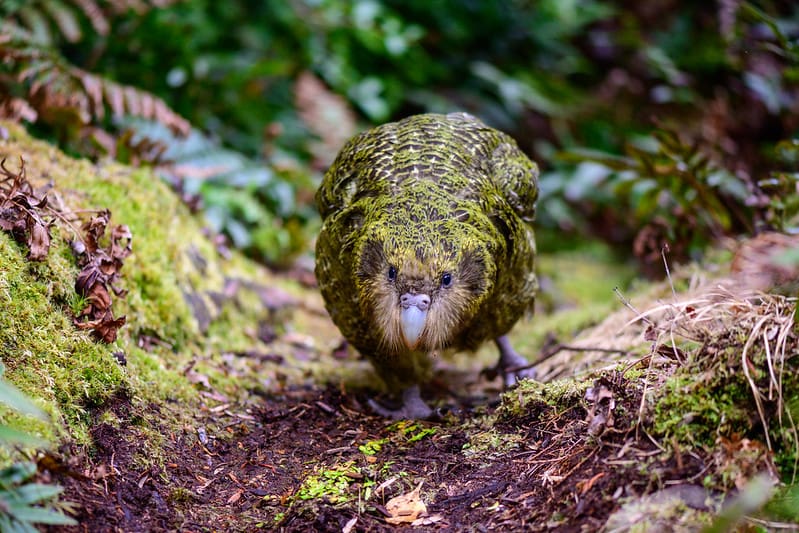The Kākāpō was once common throughout parts of the North, South and Stewart Islands of New Zealand. Its population plunged by >80% in a hundred years to 18 birds, all males, in Fiordland in 1976. In 1977, a rapidly diminishing population of about 150 birds was discovered on Stewart Island. Its decline has been due to habitat clearance, past hunting, low reproductive fertility, disease and non-native predators. There were recent banner breeding years with dozens of chicks fledging, but disease outbreaks in adult birds have tempered these successes.
Since 1995, the WPT and its partners have consulted on a supplementary Kākāpō diet, instructed on artificial insemination techniques, studied male fertility issues, and carried out health monitoring, disease prevention and screening and captive management.
In 2019, WPT’s affiliate New Zealand Parrot Trust helped the New Zealand Department of Conservation’s Kākāpō Recovery purchase GPS units to register geographic and movement data on the elusive birds. Trail cameras were also supplied, and placed in front of feeding stations to track nocturnal movements. In a ground-breaking move, the technology has allowed for tracking 10 released birds in a fenced sanctuary on the mainland. With the information obtained, it will be possible to fine-tune researchers’ understanding of the habitat requirements of males, females and juveniles for better release planning.
Status: IUCN Critically Endangered / CITES Appendix I
Population: 244 individuals, slowly increasing.
Threats: This parrot’s population declined due to habitat degradation and clearance, and the introduction of predators such as stoats and cats. Its range contracted substantially following first human (Maori) occupation of New Zealand around 1200 years ago when the birds were hunted. European settlement caused the species’ catastrophic decline.
Range: Found on Anchor, Little Barrier, Maud and Codfish Islands, New Zealand.
Natural history: This parrot is a flightless ground dweller of forest substrate and low scrubland from sea level to 1200 m (3938 ft). It feeds on leaves, roots, fruits, ferns, mosses, fungi and seeds; is also supplemented with dried rimu fruits, green walnuts, pine conelets and a concentrated commercial pellet. It is a lek breeder (with males engaging in competitive displays); its nest is a ground burrow. Breeding success depends on rimu fruit availability.

